THE HISTORY OF THE ORIGIN OF CHINESE TRADITIONAL PATTERNS AND ITS EXPRESSIVE MEANS IN SCHOOL
Keywords:
calligraphy , rebusu , hieroglyphicsAbstract
The development of traditional Chinese patterns has passed a long period of time. From the simplest patterns to hieroglyphs, from traditional hieroglyphs to modern Chinese hieroglyphs, it passed a long period of time. This is the result of continuous changes derived from one generation. To the next. Other, symbolic meaning is also different. At the same time, the use of patterns in different periods is different
References
E.V. Peschanskaja.Sposoby vyrazhenija dobryh pozhelanij v tradicionnyj i netradicionnyh kitajskih ornamentah. Moskva 2020. -86s
TUN CZJeSJa,PRIMENENIE TRADICIONNYH KITAJSKIH DEKORATIVNYH UZOROV NA UROKE HUDOZhESTVENNOGO OFORMLENIJa I ZhIVOPISI. MPGU 2019—87 s.
Anisimova-Tkalich S.K., Tkalich A.I. Podgotovka jetnouchjonyh na osnove modelirovanija kooperativnyh nauchnyh issledovanij v regionah Rossii. 2020.– № 8. – S. 108-112.
Alekseev V. M. Kitajskaja narodnaja kartina. — M., 1966.
Downloads
Published
Issue
Section
License

This work is licensed under a Creative Commons Attribution-NoDerivatives 4.0 International License.
CC BY-ND
A work licensed in this way allows the following:
1. The freedom to use and perform the work: The licensee must be allowed to make any use, private or public, of the work.
2. The freedom to study the work and apply the information: The licensee must be allowed to examine the work and to use the knowledge gained from the work in any way. The license may not, for example, restrict "reverse engineering."
2. The freedom to redistribute copies: Copies may be sold, swapped or given away for free, in the same form as the original.





